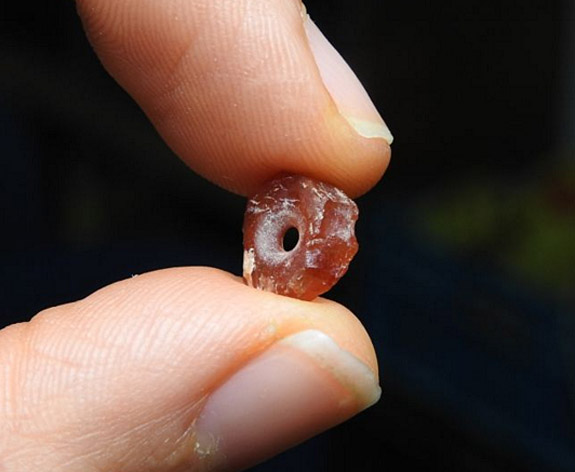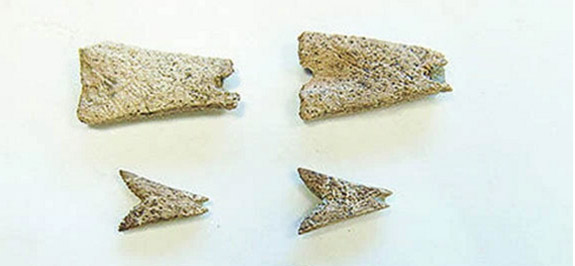Red-orange carnelian beads dating back 7,000 years were unearthed recently at the site of Jerusalem's oldest-known settlement. The discovery of the beads points to an artistic culture that valued self-adornment, as well as one that possessed the technical skills to drill and shape the gems for use in jewelry.
The gemstone beads, pottery shards, flint tools and a bowl carved from basalt rock were dated by the Israel Antiquities Authority to the early Chalcolithic era, around 5,000 BC. This was a transitional time when humans began to use copper ("chalcos" in Greek) to augment their stone tools ("lithos" in Greek).
The artifacts were excavated from two well preserved stone dwellings in the north Jerusalem neighborhood of Shuafat. The archaeologists also unearthed an impressive collection of tools, including sickle blades for harvesting cereal crops, chisels, axes, borers and awls.
“It is quite evident that there was a thriving settlement in the Jerusalem area in ancient times. Thousands of years later, the buildings uncovered are of a standard that would not fall short of Jerusalem’s architecture,” said Ronit Lupo, director of excavations for the Israel Antiquities Authority.
Carnelian has been cherished throughout history, earning a prominent place in ancient Hebrew, Greek, Roman and Babylonian cultures. Carnelian gems were often mounted into amulets, insignia rings and seals. In Biblical times, carnelian was also known as "sard," which was the first stone set into the breastplate of Aaron, brother of Moses. The breastplate was adorned with gemstones representing the 12 tribes of Israel.
Carnelian belongs to the cryptocrystalline branch of the quartz family, which also includes agate, onyx and jasper. Carnelian is defined by its red-orange to brownish-red color, which it obtains through iron impurities that form within a colorless quartz crystal.
Laborers building a road in the town of Shuafat stumbled upon the historical site during their excavation work and immediately alerted Israeli authorities. The site, which had been out of site for thousands of years, was barely one meter below the surface. Archaeologists had presumed that the earliest Jerusalem settlements were 5,000 years old. This newest findings predate that estimate by 2,000 years.
Even though the carnelian beads found near Jerusalem are approximately 7,000 years old, they are not the oldest jewelry specimens to be featured in this blog.
Back in October of 2013, we wrote about French researchers, who unearthed a remarkably well preserved 7,500-year-old natural pearl at an ancient gravesite in the United Arab Emirates. Measuring about 2mm in diameter, the discovery has been dubbed the Umm al Quwain pearl in honor of the town in which it was found.
In September of 2014, we covered the story of Alaskan archaeologists, who discovered two matching sets of tail-shaped bone earrings that were estimated to be 12,000 years old. The items, which were unearthed at the Mead site between Fairbanks and Delta Junction, demonstrated an impressive level of technical skill and artistic detail.
Credits: Jerusalem excavation photos by Assaf Peretz, courtesy of the Israel Antiquities Authority; Bone earrings photo by Barbara Crass, Shaw Creek Archaeological Research.


















